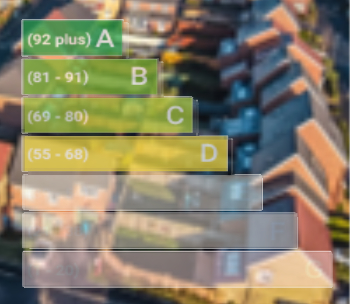The best woods for carving
Contents |
Introduction
Wood carving requires malleable but sturdy woods for different types of wood carving, such as relief carving, whittling, carving in the round, and chip carving. As a process that can include the production of sculptures, musical instruments, furniture, and much more, it needs both soft woods for ease of carving and hard woods for a more aesthetically pleasing result.
European lime
A great choice for beginners and professional carvers. Pale white to cream in colour, lime has very subtle growth rings and is fine and even textured making it a popular choice for carvers. With sharp tools, intricate detailed work can be produced. It was the preferred wood for sculptor Grinling Gibbon who produced works in many historical buildings such as Windsor Castle, St Paul’s Cathedral and many more noted buildings.
White Pine
White pine has a medium grain texture and a cream colouring. As a soft wood, it is ideal for whittling with a simple knife. In contrast, its softness and grainy texture make it less ideal for chip carving. White pine is a good wood for carving in the round as it is easy to shape and fashion.
Basswood
With a light cream colour, basswood is both soft and easy to carve and whittle. Minimum skilled carvers or beginners can use this wood efficiently with only a knife needed. Complex designs are also easily made through the use of a hammer, a gouge, and a chisel. Chip carving isn’t advised however, as it is soft, but other carving methods are an excellent choice – particularly whittling with a knife.
European oak
European oak is a very popular hard wood. It is typically light to medium brown but there can be quite a variation in colour. The grain is straight coarse and can be interlocked. Oak has been used through the centuries for construction, cabinet work, flooring, historical carvings and so on.
Mahogany
Between a soft and a hard wood, mahogany is great for any wood carving technique, including chip carving. This wood always delivers aesthetically pleasing results, and is typically used as a base material for other projects. Mahogany has a reddish tone and requires little to no work, including wood tint and the application of veneer.
Butternut
One of the best soft woods that can be used for carving, butternut has large wood grains, it is coarse, and of a light brown colour. Whittling it with a knife or carving is very easy, and butternut is typically used by professionals because of its visible grains adding beauty to projects. Easy to work with and for any type of project, butternut is a great wood for beginners.
Sugar maple
Although one of the best woods for chip carving, sugar maple can be difficult to carve as it is a hard and dense wood. Sugar maple has a typically straight grain, with the potential for waviness, and an even and fine texture. It is great for musical instruments, veneer, baseball bats, and other speciality wood items.
Black walnut
With a medium grain, this hard wood is dark brown and hard to carve. It can provide both an aesthetically-pleasing and professional result with the right tools, but it is not typically a good wood for beginners. It does not need a lot of post-work after being worked, and it can be used for chip carving, relief carving, or wood carving. Whittling, however, can be difficult as it is a hard wood.
Cherry
This dense hard wood has a pinkish brown tint and wavy grains. It is ideal for chip carving, however, it is very difficult to whittle. It is typically an all-around good wood to work as it is stable and straight grained. When being stained, it can have blotchy results and a sanding sealer needs to be used before staining.
Related articles on Designing Buildings
- 11 things you didn't know about wood.
- Birch wood.
- Carpentry.
- Cedar.
- Chip carving.
- Forest Stewardship Council.
- Lime wood.
- Oak wood properties.
- Padauk wood.
- Pine wood.
- Properties of mahogany.
- Strapwork.
- The Art of Pyrography.
- Timber.
- Types of wood.
- Violet Pinwill, woodcarver.
- Wood figure.
- Hardwood
- History and Techniques of Woodturning
- The Uses of Wood in Construction
Featured articles and news
CLC and BSR process map for HRB approvals
One of the initial outputs of their weekly BSR meetings.
Building Safety Levy technical consultation response
Details of the planned levy now due in 2026.
Great British Energy install solar on school and NHS sites
200 schools and 200 NHS sites to get solar systems, as first project of the newly formed government initiative.
600 million for 60,000 more skilled construction workers
Announced by Treasury ahead of the Spring Statement.
The restoration of the novelist’s birthplace in Eastwood.
Life Critical Fire Safety External Wall System LCFS EWS
Breaking down what is meant by this now often used term.
PAC report on the Remediation of Dangerous Cladding
Recommendations on workforce, transparency, support, insurance, funding, fraud and mismanagement.
New towns, expanded settlements and housing delivery
Modular inquiry asks if new towns and expanded settlements are an effective means of delivering housing.
Building Engineering Business Survey Q1 2025
Survey shows growth remains flat as skill shortages and volatile pricing persist.
Construction contract awards remain buoyant
Infrastructure up but residential struggles.
Home builders call for suspension of Building Safety Levy
HBF with over 100 home builders write to the Chancellor.
CIOB Apprentice of the Year 2024/2025
CIOB names James Monk a quantity surveyor from Cambridge as the winner.
Warm Homes Plan and existing energy bill support policies
Breaking down what existing policies are and what they do.
Treasury responds to sector submission on Warm Homes
Trade associations call on Government to make good on manifesto pledge for the upgrading of 5 million homes.
A tour through Robotic Installation Systems for Elevators, Innovation Labs, MetaCore and PORT tech.
A dynamic brand built for impact stitched into BSRIA’s building fabric.
BS 9991:2024 and the recently published CLC advisory note
Fire safety in the design, management and use of residential buildings. Code of practice.
























